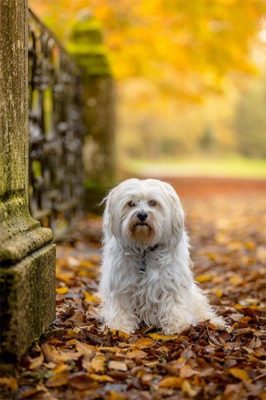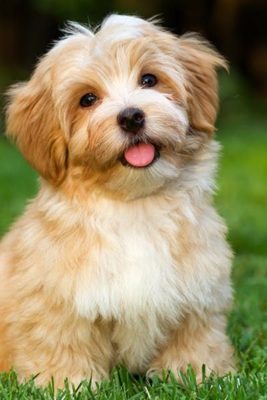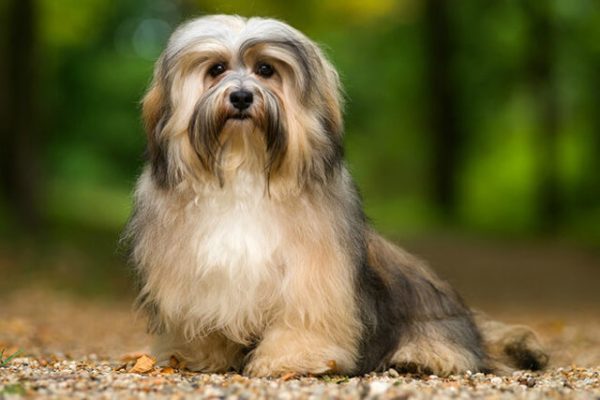Havanese
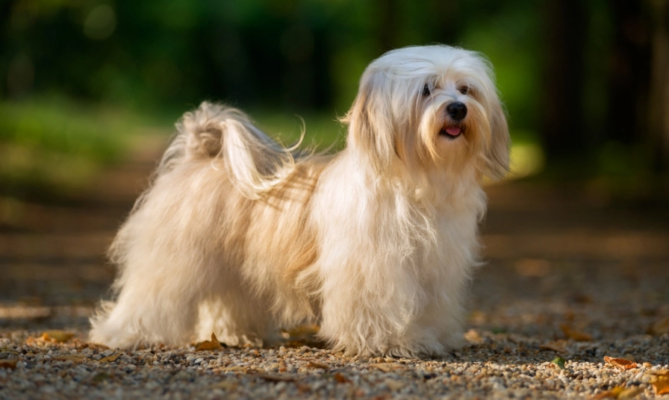
The Havanese is a gentle and affectionate, smart, and intelligent breed. Its representatives are relatively calm. At the same time, these pets are quite agile; they love human interaction, play well with children, other dogs, and even cats. The Havanese Bichon loves to be the center of attention, and it will resort to any antics to arouse interest in itself.
Table of Contents
Breed Information
| Another Name | Havanese Cuban Bichon, Bichón Havanés, Havaneser, Havanezer, Bichon Habanero, Rigno (Common Scottish Name) |
| Origin | Cuba |
| Height | Males 23-29 cm Females 23-27 cm |
| Weight | 3-5.5 kg |
| Fur | Long |
| Color | White, black, black and tan, sable, gray, chocolate |
| Lifespan | 14-16 years |
| FCI Classification | Companion and Toy Dogs |
| Group | Hypoallergenic dogs, apartment dogs, dogs for kids, small breed dogs or decorative dogs |
| Price | From $800 |
Breed Photos
Origin History
Havanese Bichons are Cuba’s national breed. In the XV century, the ancestors of Havanese were brought to this country by Spanish sailors, and later they were crossed with native Cuban breeds. This crossbreeding created a new breed, which the Cubans called the “little white dog from Havana”.
In the 16th century, pets of the new breed were brought to Europe, where they were called “white Cubans. At first, in Europe, these dogs became widely popular and were kept not only as pets in the homes of aristocrats but also as service dogs. Over time, the fame of the “little white dog from Havana” began to fade and the number of this breed declined to such an extent that it almost disappeared not only in Europe but also in his native Cuba. But some pets did remain, and it is from them that the modern Havanese Bichons evolved. The Fédération Cynologique Internationale adopted the Havanese breed standards in 1963.
Appearance
Havanese Bichons are owners of a long, fluffy coat that visually increases their size and hides how small they are. The pet’s body is slightly longer than its height. The soft coat varies from straight to curly, although wavy is considered ideal for this breed. Coat color comes in white, black, black and tan, sable, gray, and various other colors.
Large, dark almond-shaped eyes characterize Havanese with an affectionate and friendly expression. The pet’s ears are covered with thick fur, floppy and rounded underneath. The Havanese Bichon tail is usually curved and thrown on its back, covered with a luxurious fan of a long shiny coat.
Character
The Havanese is a gentle and affectionate, smart, and intelligent breed. Its representatives are relatively calm. At the same time, these pets are quite agile; they love human interaction, play well with children, other dogs, and even cats. The Havanese Bichon loves to be the center of attention, and it will resort to any antics to arouse interest in itself.
One of Havana Bichons’ characteristics is their ability to reflect the mood and character of their owner. The pet of an optimistic extrovert will never be quiet and reserved, and the pet of a modest introvert is unlikely to be too energetic and proactive.
Care
The Havanese Bichon is an ideal apartment pet. To satisfy its needs for movement, it needs only a half-hour walk once or twice a day.
It is very important to take care of the Havanese coat, which needs to be brushed daily. To save time and effort, some owners of these pets prefer to cut their hair short. This breed can be bathed only when necessary.
Like other dogs, Havanese Bichons need regular basic hygiene procedures – brushing their ears and eyes and clipping their claws. Also, this pet needs brushing several times a week to help avoid oral problems and diseases.
Training
Havanese are highly trainable. They are pretty smart and intelligent dogs and, despite their small size, can learn even the most difficult commands and tricks.
Raising a Havanese Bichon is worth starting at an early age; in particular, on the first day he arrives at home, it is important to begin to accustom him to his bed and litter box, as well as his nickname. Once the pet is used to the house and the rules of behavior, you can begin more thorough training. It should not be boring and monotonous as the Havanese do not like to concentrate on one thing for long. It is best to conduct training in game form, using incentives. For a favorite treat, the Havanese will do all the commands, even if he is not in the mood for it.
Common Diseases
Havanese Bichons are relatively healthy dogs. Their lifespan can range from 14 to 16 years. That said, many diseases can occur among this breed. These include deafness, eye disease, heart disease, and bone and joint problems.
Also, as a small breed, Havanese can be prone to dental problems. They have the same number of teeth as large breeds, but all of those teeth are squeezed into a tiny mouth. Therefore, dental care is very important for these bichons.
Nutrition
To keep your Havanese in good shape and prevent obesity, you need to watch his portion size and feed him no more than twice a day. The Havanese Bichon portion size should be appropriate for its size, age, and activity level. Signs that it is time for the pet to reduce food are an undefined waist and hidden ribs that are impossible to feel.
Havanese Bichons can be fed both dry food and natural products. If dry food is the basis of the diet, it must be of high quality. In natural food, the Havanese diet can include lean meat, fish fillets, low-fat cottage cheese and kefir, chicken yolk, vegetables, and fruits. It is categorically not recommended to offer the Havanese Bichon grapes and exotic fruits, as well as cabbage and potatoes.
In both cases, you need to remember to replenish your pet’s diet with vitamins. For this purpose, there are special vitamin capsules for dogs, which your veterinarian can help you find.
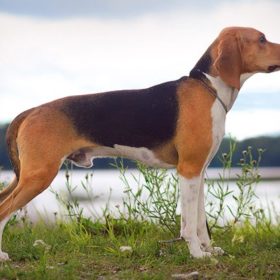 Estonian Hound
Estonian Hound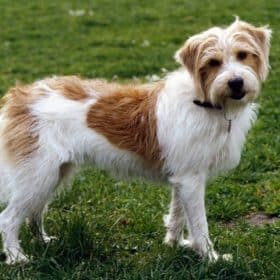 Kromfohrländer
Kromfohrländer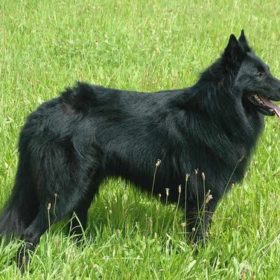 Belgian Shepherd Groenendael
Belgian Shepherd Groenendael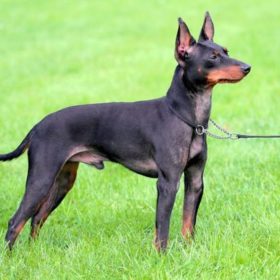 English Toy Terrier
English Toy Terrier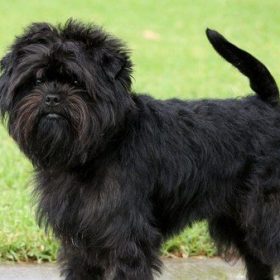 Affenpinscher
Affenpinscher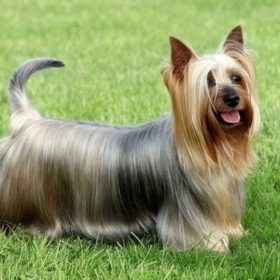 Australian Silky Terrier
Australian Silky Terrier